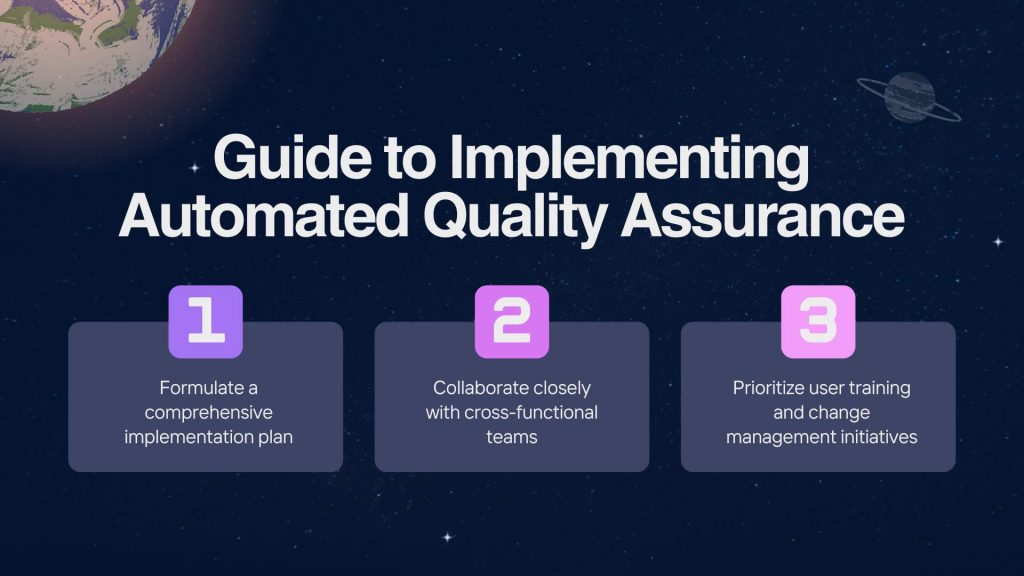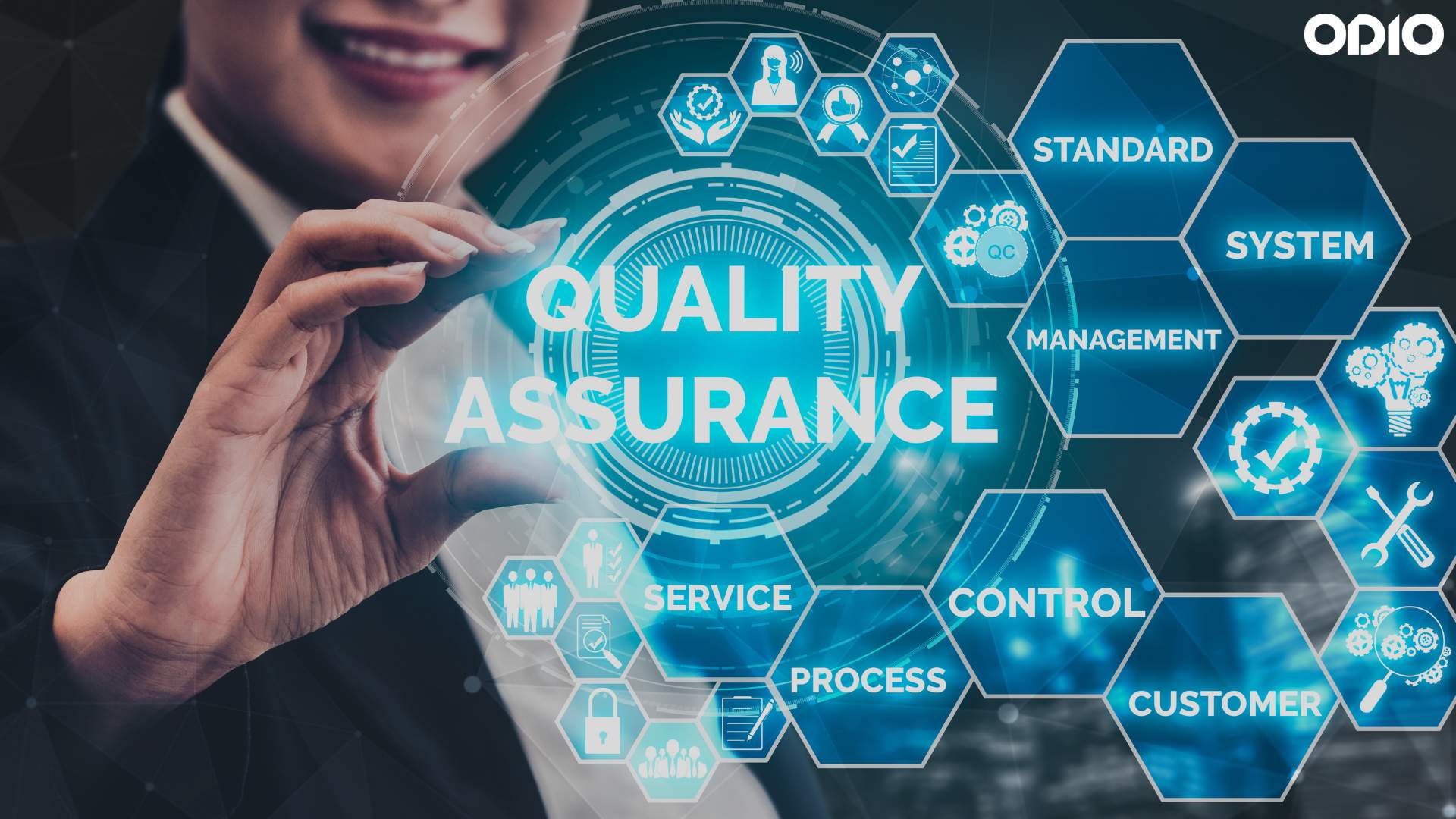As we’ve all come to know, Perfect service quality is crucial in the hectic world of call center operations. The call center industry demands impeccable service quality and this is where Automated Quality Assurance (AQA) comes in. Automated Quality Assurance (AQA), where state-of-the-art technology and the art of superior customer service collide. By 2024, over 80% of organizations are projected to adopt AQA to streamline call centers. Just this number demonstrates how revolutionary automated quality assurance can be in changing the face of customer service.
Did you realize that implementing Automated Quality Assurance can catapult your call center performance to unprecedented heights?
A strong, real-time feedback mechanism is the foundation of any successful call center. Recent research indicates that call centers that use real-time feedback methods see an astounding 37% boost in customer satisfaction. This figure amply illustrates the critical significance that immediate feedback has in improving customer loyalty and service quality.
Benefits of Implementing Automated Quality Assurance in Call Centers
In a time of increased client demands and fierce competition, contact centers face tremendous pressure to provide unmatched service quality. With its many advantages over conventional ways of evaluating quality, Automated Quality Assurance (AQA) becomes a ray of hope. Let’s examine the ways in which call center operations performance can be improved through the strategic integration of AQA.
Improving Agent Performance Through Real-Time Feedback Mechanisms
At the crux of every successful call center lies a team of highly skilled agents who serve as the frontline ambassadors of your brand. Through the use of AQA-facilitated real-time feedback systems, businesses can provide their agents with useful insights to improve their performance on-the-fly. Research indicates that contact centers utilizing AQA-driven feedback mechanisms experience a remarkable 42% increase in agent productivity, highlighting the revolutionary influence of real-time performance assessment.
Enhancing Customer Experience: The Impact of AQA on Service Quality
Offering a smooth and customized experience is a must in the very competitive world of customer service. In this quest, AQA is crucial since it allows call centers to significantly improve the quality of their services. Organizations may anticipate consumer demands, pinpoint areas for improvement, and customize their service offerings to cultivate enduring client loyalty via AQA-driven quality evaluations. It should come as no surprise that companies using AQA see a significant 30% improvement in customer satisfaction ratings, which opens the door to long-term success and growth.
Driving Efficiency and Consistency in Quality Evaluation Processes
Traditionally, evaluating the quality of customer service at call centers has been a labor-intensive, prone to error, and inefficient process. Let us introduce you to Automated Quality Assurance, a revolutionary technology that optimizes quality assessment procedures with unmatched accuracy and efficiency. AQA improves uniformity across evaluations by eliminating human mistake by automating repetitive processes and standardizing evaluation standards. Organizations can thus become leaders in the industry for service excellence and experience increased operational efficiency, lower costs, and improved regulatory compliance.
How to Integrate Automated Quality Assurance Processes into Call Center Operations?
As the demand for superior customer service escalates, call centers are increasingly turning to Automated Quality Assurance (AQA) as a cornerstone of their operational strategy. However, the successful integration of AQA into existing operations requires careful planning, meticulous execution, and a keen understanding of organizational needs. Let’s embark on a journey to demystify the process of integrating AQA into your call center operations seamlessly.
Assessing Current QA Systems and Identifying Gaps
Before diving headlong into the world of Automated Quality Assurance, it’s imperative to conduct a comprehensive assessment of your current Quality Assurance (QA) systems. Identify pain points, inefficiencies, and areas ripe for improvement within your existing QA framework. By conducting thorough gap analyses, you can pinpoint the specific functionalities and features that AQA can augment or replace, laying the groundwork for a smooth transition.
Selecting the Right AQA Tools and Technologies for Your Needs
Choosing the appropriate tools and technology in the constantly growing field of AQA solutions might be challenging. The range of AQA functions is extensive and varied, ranging from sentiment analysis to speech analytics. Start by outlining your precise needs, taking into account aspects like compatibility, scalability, and ease of integration with current systems. Utilize information from peer evaluations, industry benchmarking, and vendor discussions to find AQA solutions that closely match the aims and objectives of your company.
Step-by-Step Guide to Implementing AQA: From Planning to Execution

The successful implementation of AQA hinges on a well-defined roadmap that encompasses every stage of the deployment process. Start by formulating a comprehensive implementation plan, outlining key milestones, timelines, and resource allocations. Collaborate closely with cross-functional teams, including IT, operations, and training, to ensure a holistic approach to implementation. Prioritize user training and change management initiatives to facilitate a smooth transition and maximize adoption rates across the organization.
Importance of Real-Time Feedback Systems for Agent Performance Enhancement
Giving agents timely and useful feedback is essential to promoting continuous development and achieving performance excellence in the ever-changing world of call center operations. In this quest, Automated Quality Assurance (AQA)-enabled real-time feedback systems prove to be vital, providing numerous advantages that beyond conventional assessment techniques. Allow us to explore the critical role that real-time feedback plays in improving agent performance and driving contact centers to unprecedented levels of success.
Role of Real-Time Feedback in Agent Development
Agents are the lifeblood of any call center, serving as the frontline ambassadors of your brand and the primary drivers of customer satisfaction. Real-time feedback mechanisms enable supervisors and managers to provide instantaneous insights and coaching to agents during live interactions. By pinpointing strengths, addressing areas for improvement, and offering actionable suggestions in the moment, real-time feedback empowers agents to refine their skills, boost their confidence, and deliver exceptional service consistently.
Best Practices for Setting Up Real-Time Feedback Mechanisms
Establishing effective real-time feedback mechanisms requires a strategic approach and adherence to best practices that maximize impact and efficacy. Invest in advanced AQA technologies that enable supervisors to monitor interactions in real-time, flagging relevant moments for immediate feedback and coaching. Leverage customizable evaluation criteria and performance metrics to align feedback with organizational goals and agent development objectives. Foster a culture of continuous learning and improvement by providing regular training sessions, coaching opportunities, and recognition programs that reinforce positive behaviors and drive performance excellence.
Best Practices for Setting Up Evaluation Criteria in Automated Quality Assurance Systems
The effectiveness of quality assessment procedures in the context of call center operations depends on the careful formulation and use of evaluation criteria. Numerous opportunities exist for standardizing and improving evaluation criteria to be in line with business goals and objectives when using Automated Quality Assurance (AQA) systems. In order to ensure impartiality, uniformity, and fairness in the procedures of evaluating quality, let us examine the best practices for establishing evaluation criteria in AQA systems.
Key Performance Metrics and Evaluation Criteria
The foundation of effective quality evaluation lies in the clear definition of key performance metrics and evaluation criteria that accurately reflect the desired service standards and objectives. Collaborate closely with stakeholders from various departments to identify relevant metrics, such as first-call resolution rates, average handling times, and customer satisfaction scores. Leverage insights from industry benchmarks and best practices to establish realistic targets and benchmarks for performance evaluation.
Customizing Evaluation Criteria to Suit Business Objectives
Every call center operates within a unique operational context, characterized by distinct business objectives, customer demographics, and service offerings. Tailoring evaluation criteria to align with these specificities is essential for driving meaningful insights and actionable recommendations. Consider factors such as industry regulations, customer preferences, and organizational priorities when customizing evaluation criteria to ensure relevance and applicability in real-world scenarios.
Ensuring Fairness and Objectivity in Evaluation Processes
Maintaining fairness and objectivity in quality evaluation processes is paramount to fostering trust, transparency, and accountability within the organization. Implement mechanisms to minimize bias and subjectivity in evaluation criteria, such as calibration sessions, inter-rater reliability checks, and standardized scoring rubrics. Provide clear guidelines and training to evaluators to ensure consistent interpretation and application of evaluation criteria across all assessments.
Enhancing Customer Experience Through Automated Quality Assurance and Feedback Mechanisms
Providing outstanding client experiences is the cornerstone of long-term business success in the hyperconnected world of today. In this quest, Automated Quality Assurance (AQA) proves to be a potent facilitator, providing a range of instruments and systems to improve service quality, predict client requirements, and stimulate significant interaction. Let’s explore how businesses might use AQA to improve client satisfaction and encourage steadfast loyalty.
Using AQA to Anticipate and Address Customer Needs
Understanding and addressing customer needs in real-time is crucial for delivering personalized and proactive service experiences. AQA systems equipped with advanced analytics and sentiment analysis capabilities enable organizations to glean actionable insights from customer interactions. By analyzing customer sentiments, identifying pain points, and detecting emerging trends, organizations can anticipate customer needs and tailor their service delivery accordingly. This proactive approach not only enhances customer satisfaction but also fosters a deeper sense of loyalty and trust.
Personalization and Customization: Tailoring Feedback for Individual Agents
Recognizing and nurturing the unique strengths and development areas of individual agents is essential for fostering a culture of continuous improvement and excellence. AQA systems offer the flexibility to customize feedback and coaching based on each agent’s performance metrics, skill level, and learning style. By providing personalized feedback and targeted coaching interventions, organizations can empower agents to refine their skills, overcome challenges, and achieve their full potential. This personalized approach not only enhances agent morale and engagement but also translates into tangible improvements in customer interactions and satisfaction levels.
Using AQA Insights to Drive Customer-Centric Improvements
The true value of AQA lies not only in evaluating performance but also in driving strategic insights and actionable recommendations for organizational improvement. By aggregating and analyzing data from across the call center ecosystem, AQA systems uncover valuable insights into customer preferences, behaviors, and pain points. Organizations can leverage these insights to identify areas for process optimization, product innovation, and service enhancements that directly impact the customer experience. Whether it’s streamlining processes, introducing new service offerings, or refining communication strategies, AQA-driven insights empower organizations to stay ahead of evolving customer expectations and deliver memorable experiences that drive loyalty and advocacy.
Conclusion
As we draw the curtains on our exploration of Automated Quality Assurance (AQA) and its profound implications for call center operations, it’s evident that we stand at the precipice of a transformative revolution in customer service excellence. Through the use of AQA-driven insights and feedback mechanisms, firms can effectively leverage numerous prospects to improve client experiences, boost performance, and promote long-term expansion.
Adopting AQA is more crucial than ever when the competitive environment shifts and client expectations reach previously unheard-of heights. Companies who capitalize on this and integrate AQA into their contact center operations will experience long-term growth in the digital age, as well as enhanced customer satisfaction and performance.
Together, let’s transform the way we provide customer experiences and reshape what the future holds for contact center operations. Are you ready to take the plunge into the world of Automated Quality Assurance and elevate your call center to new heights of success? The journey begins now.
Thank you for joining us on this journey through the realms of AI and cost-effective call center strategies. For more insightful content, stay tuned to our blogs at Odio.

Leave a Reply